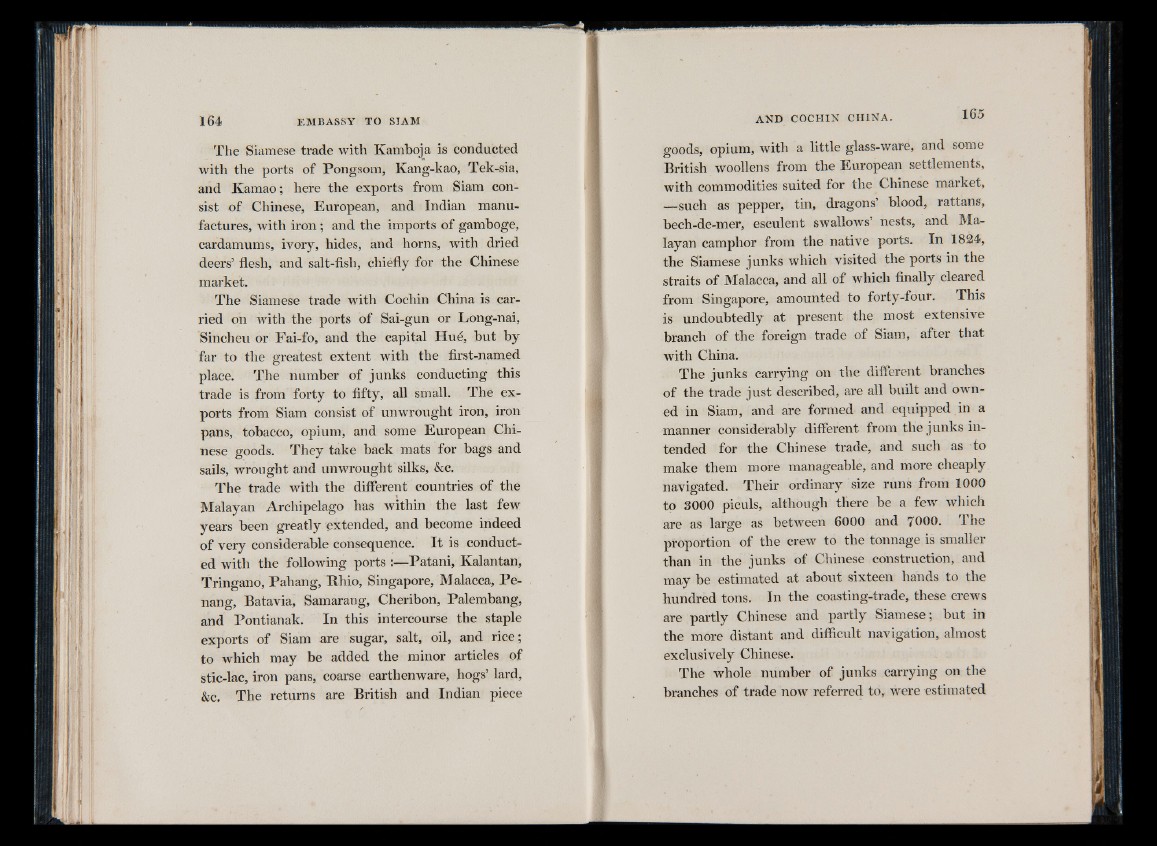
The Siamese trade with Kamboja is conducted
with the ports of Pongsom, Kang-kao, Tek-sia,
and Kamao; here the exports from Siam consist
of Chinese, European, and Indian manufactures,
with iron ; and the imports of gamboge,
cardamums, ivory, hides, and horns, with dried
deers’ flesh, and salt-fish, chiefly for the Chinese
market.
The Siamese trade with Cochin China is carried
on with the ports of Sai-gun or Long-nai,
Sincheu or Fai-fo, and the capital Hué, but by
far to the greatest extent with the first-named
place. The number of junks conducting this
trade is from forty to fifty, all small. The exports
from Siam consist of unwrought iron, iron
pans, tobacco, opium, and some European Chinese
goods. They take back mats for bags and
sails, wrought and unwrought silks, &c.
The trade with the different countries of the
Malayan Archipelago has within the last few
years been greatly extended, and become indeed
of very considerable consequence. I t is conducted
with the following ports :—Patani, Kalantan,
Tringano, Pahang, Ithio, Singapore, Malacca, P e nang,
Batavia, Samarang, Cheribon, Palembang,
and Pontianak. In this intercourse the staple
exports of Siam are sugar, salt, oil, and rice;
to which may be added the minor articles of
stic-lac, iron pans, coarse earthenware, hogs’ lard,
&c. The returns are British and Indian piece
goods, opium, with a little glass-ware, and some
British woollens from the European settlements,
with commodities suited for the Chinese market,
—such as pepper, tin, dragons’ blood, rattans,
bech-de-mer, esculent swallows’ nests, and Malayan
camphor from the native ports. In 1824,
the Siamese junks which visited the ports in the
straits of Malacca, and all of which finally cleared
from Singapore, amounted to forty-four. This
is undoubtedly at present the most extensive
branch of the foreign trade of Siam, after that
with China.
The junks carrying on the different branches
of the trade just described, are all built and owned
in Siam, and are formed and equipped in a
manner considerably different from the junks intended
for the Chinese trade, and such as to
make them more manageable, and more cheaply
navigated. Their ordinary size runs from 1000
to 3000 piculs, although there be a few which
are as large as between 6000 and 7000. The
proportion of the crew to the tonnage is smaller
than in the junks of Chinese construction, and
may be estimated at about sixteen hands to the
hundred tons. In the coasting-trade, these crews
are partly Chinese and partly Siamese; but in
the more distant and difficult navigation, almost
exclusively Chinese.
The whole number of junks carrying on the
branches of trade now referred to, were estimated